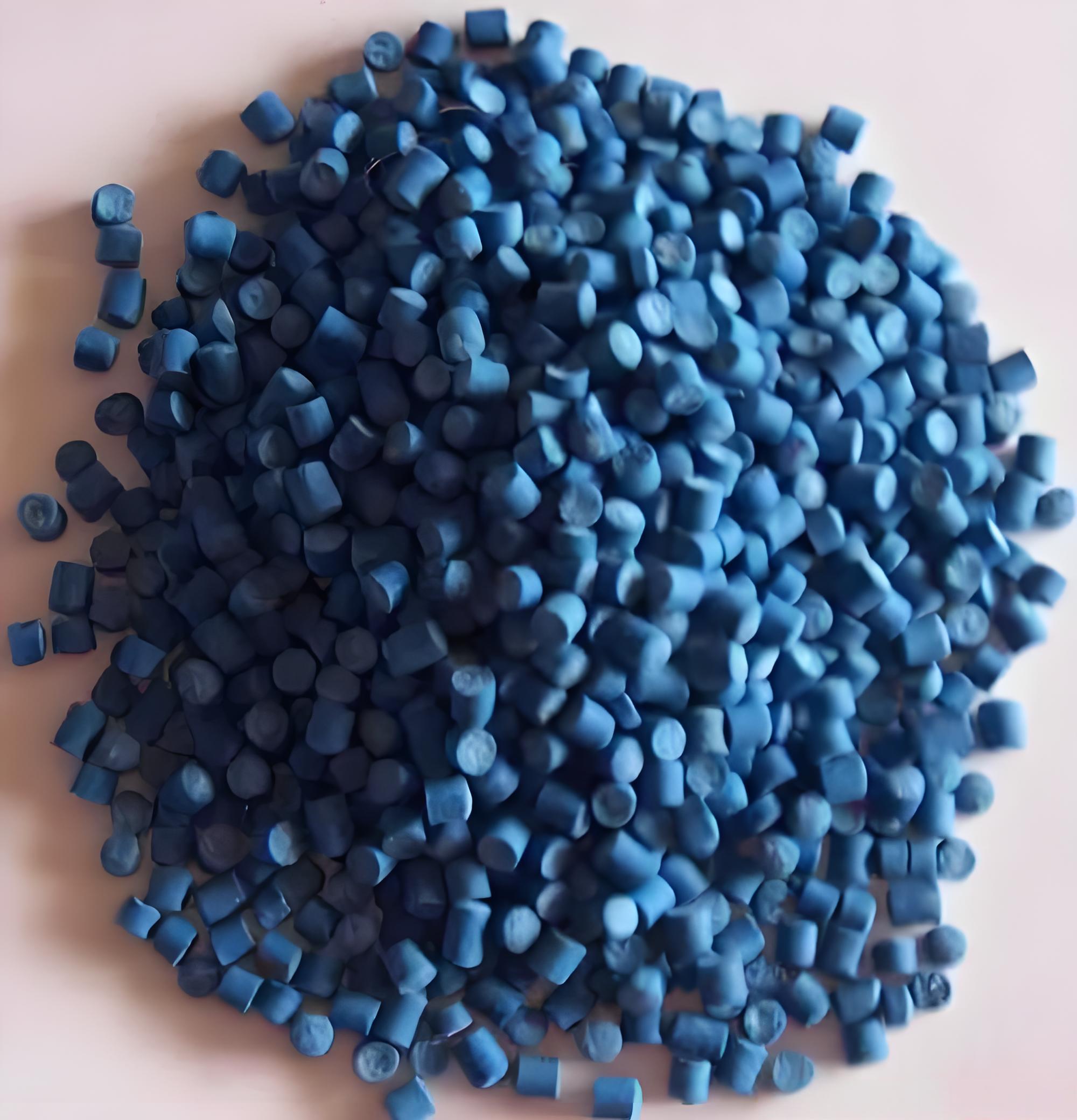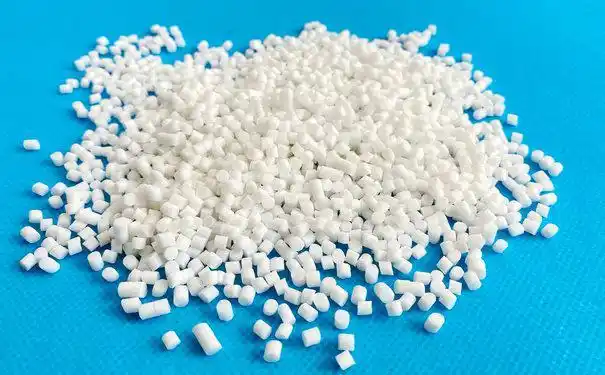As someone who’s spent over a decade working with thermoplastic elastomers (TPE) in various manufacturing and design projects, I’ve had my fair share of trial and error when it comes to cutting this versatile material. TPE’s unique blend of rubber-like elasticity and plastic-like processability makes it a go-to for industries like automotive, medical, and consumer goods. But its soft, flexible nature can make cutting a challenge if you don’t have the right tools or techniques. In this article, I’ll share my insights on the best methods for cutting TPE, drawing from years of hands-on experience to help you achieve clean, precise cuts without compromising the material’s integrity.

Why Cutting TPE Is Trickier Than You Might Think
TPE materials are known for their elasticity, durability, and ability to stretch without deforming permanently. These properties, while fantastic for end-use applications, can complicate the cutting process. If you’ve ever tried slicing through a soft, rubbery material, you know it can stretch, tear, or deform under pressure, leaving jagged edges or uneven cuts. Over the years, I’ve seen countless projects where improper cutting led to wasted materials or costly rework. The key is understanding the material’s behavior and choosing a method that respects its unique characteristics.
The goal here is to achieve a clean, precise cut that maintains the material’s shape and functionality. Whether you’re working with TPE sheets, films, or molded parts, the right approach depends on factors like thickness, hardness (Shore A or D scale), and the desired edge quality. Let’s dive into the best cutting methods I’ve found effective over the years, along with practical tips to ensure success.
Top Methods for Cutting TPE Materials
Based on my experience, several cutting methods stand out for TPE, each suited to different applications and equipment availability. Below, I’ll break down the most reliable options, their pros and cons, and when to use them.
1. Die Cutting: Precision for High-Volume Production
Die cutting is my go-to method for projects requiring consistent, high-volume cuts, especially for TPE sheets or films. This process uses a custom steel die to punch out shapes with incredible precision. In my early days working in a factory producing TPE gaskets, die cutting was a lifesaver for meeting tight tolerances.

How it works: A hydraulic or mechanical press forces a sharp steel die through the TPE material, cutting it into predefined shapes. The die can be customized for intricate designs, making it ideal for industries like automotive or electronics.
Pros and Cons:
|
Method |
Advantages |
Limitations |
Best For |
|---|---|---|---|
|
Die Cutting |
High precision, fast for mass production, clean edges |
High initial setup cost, less flexible for small batches |
Gaskets, seals, thin TPE sheets |
Tips from experience: Ensure the TPE is properly cooled before cutting, as warmer material can stick to the die. I’ve also found that lubricating the die with a light silicone spray can reduce friction and improve edge quality.
2. Laser Cutting: Versatility for Complex Shapes
Laser cutting has become increasingly popular in my work with TPE, especially for prototypes or custom designs. The focused beam vaporizes the material along the cut line, allowing for intricate patterns without physical contact.
How it works: A laser cutter uses a high-powered beam to melt or vaporize TPE along a programmed path. I’ve used this method for creating detailed TPE components for medical devices, where precision is non-negotiable.
Pros and Cons:
|
Method |
Advantages |
Limitations |
Best For |
|---|---|---|---|
|
Laser Cutting |
High precision, no tool wear, ideal for complex shapes |
Can cause burns on edges, expensive equipment |
Prototypes, intricate designs |
Tips from experience: Adjust the laser’s power and speed to avoid charring or melting the TPE. I recommend testing on scrap material first to fine-tune settings. Ventilation is critical, as TPE can release fumes when heated.
3. Water Jet Cutting: Clean and Heat-Free
Water jet cutting is a fantastic option when you need clean cuts without heat-related issues. I’ve used this method for thicker TPE parts, like those used in industrial seals, where thermal distortion could ruin the material.
How it works: A high-pressure stream of water, sometimes mixed with abrasive particles, slices through the TPE. The cold-cutting process preserves the material’s properties, making it ideal for sensitive applications.
Pros and Cons:
|
Method |
Advantages |
Limitations |
Best For |
|---|---|---|---|
|
Water Jet Cutting |
No heat damage, clean edges, versatile for thick materials |
Slower than laser, high equipment cost |
Thick TPE parts, heat-sensitive applications |
Tips from experience: Use a sacrificial backing material to prevent surface damage from the water jet’s force. Ensure the TPE is securely fixtured to avoid movement during cutting.
4. Manual Cutting with Blades: Simple but Limited
For small-scale or DIY projects, manual cutting with a sharp blade can work, though it’s not my first choice for professional applications. I’ve used this method in a pinch for quick prototypes or repairs.

How it works: A utility knife, rotary cutter, or guillotine shear is used to slice through TPE. This method is best for thin, soft TPE materials (Shore A 30-50).
Pros and Cons:
|
Method |
Advantages |
Limitations |
Best For |
|---|---|---|---|
|
Manual Cutting |
Low cost, accessible, good for quick cuts |
Prone to uneven edges, labor-intensive |
DIY projects, thin TPE films |
Tips from experience: Use a sharp, high-quality blade and make multiple shallow passes rather than one deep cut to avoid tearing. A cutting mat and straightedge guide can improve accuracy.
Factors to Consider When Choosing a Cutting Method
Over the years, I’ve learned that no single method is universally “best” for cutting TPE. The right choice depends on several factors:
Material Thickness and Hardness: Softer TPEs (e.g., Shore A 20) are more prone to stretching, making die or water jet cutting preferable. Harder TPEs (e.g., Shore D 50) can handle laser cutting better.
Production Volume: For large-scale production, die cutting is cost-effective. For one-offs or prototypes, laser or manual cutting might suffice.
Edge Quality Requirements: If you need ultra-smooth edges for aesthetic or functional purposes (e.g., medical devices), laser or water jet cutting is superior.
Budget and Equipment Access: Manual cutting is budget-friendly but limited, while laser and water jet cutting require significant investment.
In one project, I was tasked with cutting TPE tubing for a medical application. We initially tried manual cutting but struggled with inconsistent edges. Switching to a laser cutter with optimized settings gave us the precision we needed, saving time and reducing waste. This taught me the importance of matching the method to the project’s specific needs.

Practical Tips for Cutting TPE Successfully
Here are some hard-earned lessons from my years in the field to help you avoid common pitfalls:
Keep the Material Cool: TPE can become gummy when warm, leading to sticking or deformation. If possible, cool the material to 15-20°C before cutting, especially for die or laser methods.
Use Sharp Tools: Dull blades or worn dies will tear TPE rather than cut it cleanly. Regular maintenance is key.
Test First: Always run a test cut on a scrap piece to dial in settings, whether it’s blade pressure, laser power, or water jet speed.
Secure the Material: TPE’s elasticity can cause it to shift during cutting. Use clamps, vacuum tables, or adhesive backing to keep it in place.
Clean Edges Post-Cutting: For laser or water jet cuts, a quick wipe with isopropyl alcohol can remove residue or minor burns.
My Go-To Setup for Most TPE Projects
If I had to pick one setup for most TPE cutting tasks, I’d lean toward laser cutting for its balance of precision, versatility, and speed. In a recent project, we used a 60W CO2 laser cutter to produce TPE gaskets for an automotive client. By fine-tuning the power to 40% and speed to 20 mm/s, we achieved clean edges without melting. The key was testing multiple settings and ensuring proper ventilation to handle fumes.
That said, if you’re working with thicker TPE or need to avoid heat entirely, water jet cutting is a close second. It’s been my choice for industrial applications where edge quality and material integrity are critical.
Final Thoughts
Cutting TPE materials doesn’t have to be a headache if you choose the right method and take the time to understand the material’s behavior. Whether you’re running a high-volume production line or tinkering with a DIY project, there’s a cutting technique that fits your needs. My years in the industry have taught me that preparation, testing, and the right equipment make all the difference. Hopefully, the insights and tips I’ve shared here will help you achieve clean, professional cuts every time.
If you’re just starting out with TPE or tackling a new project, don’t hesitate to experiment with different methods. Each project is a chance to learn something new about this fascinating material.

Related Questions and Answers
Q: Can I use a regular scissors to cut TPE?
A: Yes, for very thin TPE films (under 1 mm) and small-scale projects, sharp scissors can work. However, they often produce uneven edges, especially on softer TPEs. I recommend a rotary cutter or utility knife with a straightedge for better results.
Q: Does laser cutting TPE produce toxic fumes?
A: TPE can release fumes when laser cut, depending on its composition. Always use a laser cutter with proper ventilation or a fume extractor. In my experience, checking the material’s safety data sheet (SDS) beforehand helps identify potential hazards.
Q: How do I prevent TPE from sticking to cutting tools?
A: Cooling the material and using a lubricant like silicone spray can reduce sticking. For die cutting, I’ve found that applying a thin layer of talc powder to the TPE surface also helps.
Q: Is water jet cutting expensive for TPE?
A: Water jet cutting can be costly due to equipment and maintenance, but it’s worth it for thick or heat-sensitive TPE parts. If you’re outsourcing, shop around for quotes, as prices vary based on material and cut complexity.





